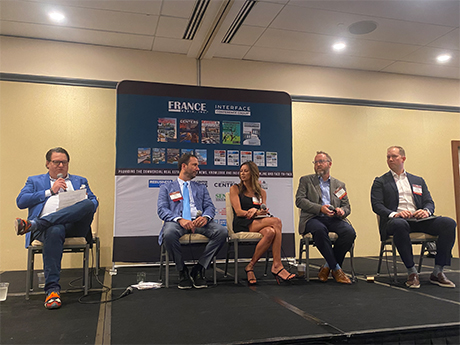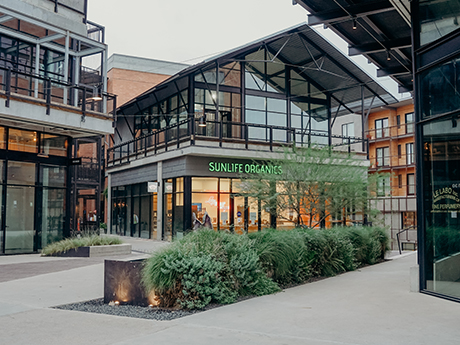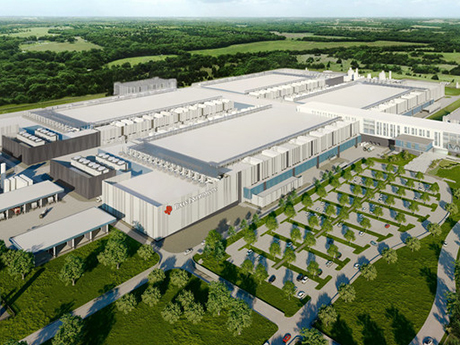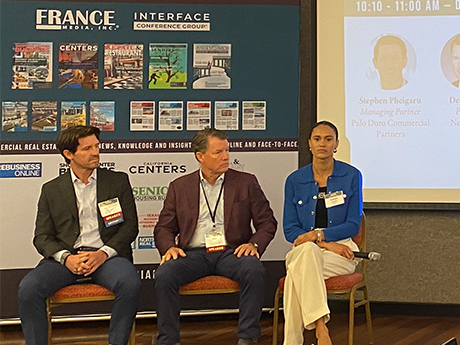By Taylor Williams AUSTIN, TEXAS — Sources of institutional capital are slowly trickling back into buyer pools of deals for multifamily properties in Austin, a move that marks an inflection point within the sector as a whole and speaks to investors’ long-term faith in that market’s fundamentals. And faith is perhaps just what the doctor ordered. In some ways, Austin has become a victim of its own success over the past decade, a sort of cautionary tale of growth gone too heavy too fast. The feverish attempts of multifamily developers to keep pace with demand during that time have come to a head, and the market now languishes in a state of oversupply. With rents softening and interest rates only just now showing concrete signs of decreasing, institutional capital has been more than content to sit on the sidelines of this market for the past 18 or so months. Editor’s note: InterFace Conference Group, a division of France Media Inc., produces networking and educational conferences for commercial real estate executives. To sign up for email announcements about specific events, visit www.interfaceconferencegroup.com/subscribe. But that is starting to change, at least according to a panel of multifamily investment sales professionals who spoke …
Texas Market Reports
By Taylor Williams In the eyes of some commercial brokers, especially those who represent tenants, there actually is such a thing as too little vacancy. When markets are running super-hot, meaning demand is far outstripping supply, tenants have minimal options and often end up paying premiums just to be able to secure space. That’s great for landlords — to a point — because markets can only bear so much rent growth in so much time before tenants start looking for workarounds to physical occupancy. Enter the Dallas-Fort Worth (DFW) industrial sector, which has been on fire for the past seven-plus years. Explosive volumes of new deliveries, frenetic paces of absorption, stiff competition for space, record levels of rent growth and a national coming-out party as an undeniable Tier 1 market have all been hallmarks of this activity. But such torrid paces of growth were never really sustainable in perpetuity, and although both the supply and demand sides of the market have cooled, the slowdown in some ways reflects a return to healthier dynamics. Editor’s note: InterFace Conference Group, a division of France Media Inc., produces networking and educational conferences for commercial real estate executives. To sign up for email announcements …
By Taylor Williams Earlier this year, data from the U.S. Census Bureau emerged stating that San Antonio had added 22,000 new residents between July 2022 and 2023, making it the nation’s fastest-growing city during that time. That figure exceeded the 18,900 new residents added between July 2021 and 2022 and brought the Alamo City’s total head count to about 1.5 million people, making it the seventh-largest U.S. city by population. With such growth comes pressure from both the anchor city and its surrounding municipalities to deliver solid employment, housing and recreation options for residents. City officials and leaders can make good on that charge by a variety of means and mechanisms, and rarely does one city or submarket’s blueprint for accommodating growth match that of another. As such, the suburbs surrounding the San Antonio area are increasingly standing on their own as unique communities that are more than capable of attracting quality housing development, national retail and restaurant users and new employment opportunities. In this story, we take a closer look at specific projects and initiatives that are helping some of these municipalities effectively and efficiently ride the wave of regional growth. Seguin: Revitalization 101 Located off I-10 on San …
By Burdette Huffman, executive vice president, Blue Ox Group Why are people drawn to spend money and time at certain places in a city? What makes someone want to do their shopping, stop for coffee or plan a date night at one spot versus another? Sometimes, it’s a special location or an emotional connection to a particular vendor. But in many instances, the draw is entirely by design. It’s an intentional, strategic urban planning tactic that’s been around for decades, and it’s called placemaking. What Is Placemaking?The concept of placemaking has been around since the 1960s thanks to urban planning pioneers and was bolstered in the 1990s by the smart growth agenda of organizations like the Urban Land Institute. In modern parlance across the state, it’s not much different. Put simply, placemaking is about creating a special place where people want to be. Placemaking is about imagining and then developing a place where parents might want to grab coffee after dropping their kids off at school. Or it’s a place where date nights happen because there’s a great new spot for dinner and maybe space to take a walk or grab a drink afterward. If it’s executed correctly, it’s the …
By Taylor Williams DALLAS — It’s an exceptionally challenging time to be developing retail space in the metroplex. Pick your poison: Interest rates that have tripled in two years, restricted proceeds from lenders, longer entitlement and permitting times, limited land for new projects. Between all these barriers to growth, the deck is seemingly stacked against brick-and-mortar retail developers these days, despite the fact that in Dallas-Fort Worth (DFW), occupancy is very high and population growth shows little sign of slowing. Of course, each of those factors is exacerbated with large-scale developments. More land and rentable square footage require the raising of more debt and equity, which translates to heftier interest and dividend payments, respectively. If the site is an assemblage, then predevelopment is more time-consuming, and with the push outward to new suburban paths of growth, those sites may not already be zoned for retail. If rents aren’t trending upward, those factors alone can kill a project in its infancy. Editor’s note: InterFace Conference Group, a division of France Media Inc., produces networking and educational conferences for commercial real estate executives. To sign up for email announcements about specific events, visit www.interfaceconferencegroup.com/subscribe. For all these reasons, some owner-operators see opportunity in building smaller …
By Taylor Williams An attractive, successful woman walks into a bar and posts up. Within minutes, multiple men have approached her, offering to buy her a drink. And while she doesn’t really need the freebie, who can blame her for accepting it? After all, nothing’s more American than having a little extra icing on your cake. To analogize this scenario to commercial real estate, think of Texas as the woman and the burgeoning semiconductor industry as the free drinks. The state’s economy was doing just fine without the mega-boost from manufacturing initiatives stemming from the 2022 CHIPS and Science Act, which has resulted in tens of billions of dollars in capital investment for North and Central Texas. But with a well-deserved reputation for welcoming businesses of all types, Texas wouldn’t be Texas if it didn’t court and embrace these manufacturers in these areas, which for many years were predominantly rural communities. Semiconductors, or computer chips, are essential elements of virtually all electronic and computing devices, including electric vehicles, phones, tablets, TVs, home appliances, solar panels and video game consoles. The CHIPS and Science Act laid the framework for the country to gain market share in terms of manufacturing these components, …
By Taylor Williams HOUSTON — High occupancy rates paired with low volumes of new construction have been the prevailing narratives in many major U.S. retail markets over the past couple years, and Houston is no exception. And while that dynamic ensures healthy rent growth within stabilized properties, when paired with high construction costs and higher interest rates, the result can be growth that feels rather sluggish. According to second-quarter data from Colliers, the Houston retail market currently has a vacancy rate of 5.2 percent, a mark that has held steady for the past year. The market added about 1.1 million square feet of new product through the first six months of 2024 to go with roughly 732,000 square feet of positive absorption. The average asking rent stands at $20.38 per square foot, which represents a 3.8 percent increase relative to the second quarter of 2023. Rosy as these figures appear on the surface, they do not tell the full story of the market. Most owners cannot afford to simply sit back and let the deals come to them at rents they dictate. For although demand exceeds supply of quality space, the aforementioned macroeconomic factors are squeezing owners’ profit margins, meaning …
By Emin Aboolian, senior vice president of underwriting, iBorrow It is not a shock to anyone in the industry to say that the commercial real estate market this year has been challenging and expected to experience further turbulence. The hoped-for interest rate cuts from the Federal Reserve have not yet happened. Price expectations from sellers have remained too optimistic due to the historic low interest rate environment that defined the capital markets for more than a decade. Investors with robust capital buckets continue to sit on the sidelines waiting for price corrections. The wall of impending maturities keeps getting closer — and seemingly larger. The “extend and pretend” approach from large lenders has pushed some maturities out but has not addressed the underlying debt-to-income ratios that these struggling commercial properties face. In summary, no matter what segment you are in — retail, office, industrial or multifamily — 2024 has been a tough year so far and is expected to carry into 2025 until sellers are forced to transact. So why do we think these clouds are going to clear generally, with the Texas market in particular pulling ahead in its recovery? Broadly speaking, the real estate sector is a victim …
Newton’s second law of physics holds that what goes up must come down, but unlike objects in freefall, retractions in real estate cycles tend to unfold with varying degrees of pace and severity. In the case of multifamily investment sales in Texas, it’s been clear for some time that the market is in a much different place than it was in late 2021 and early 2022, the latter period being when rate hikes began. In that golden era of multifamily investment sales, owners routinely achieved record highs of rent growth and brokers closed deals at legendarily high prices and low cap rates. What isn’t so clear is whether the market has bottomed out yet with regard to those metrics. Attaining clarity on that subject will remain difficult until deal volume rebounds and gives owners and brokers enough data to accurately establish trendlines. Like everything else in commercial real estate, the question of when deal volume will rebound is tied to movement in interest rates — unless maybe it isn’t. For as the world has seen over the past six months, what the Federal Reserve implies it will do and what it actually does aren’t always in sync. Some brokers …
By Taylor Williams If you build it, they will come — assuming “it” is equipped with the all the facilities, necessities and conveniences of 21st-century living. As residents and consumers, it is remarkably easy to overlook the critical pieces of infrastructure that enable these necessities and conveniences. From the perspective of end users, these facilities and systems are not instrumental to the success of commercial and residential developments because they are taken for granted as minimal requirements for occupancy. Further, in many cases, the infrastructure is not visible to the naked eye. Yet for developers, particularly those in high-growth regions like North Texas, infrastructure is anything but an afterthought. “In the eyes of developers, infrastructure is a primary aspect of any project,” says Jack Turnage, development manager at Wildcatter Realty Partners, the developer behind The Greenbelt, a 325-acre mixed-use project in Hunt County. “Without that, the only way to navigate our site is on horseback.” Located in Greenville on the northeastern outskirts of Dallas, The Greenbelt is one of numerous large-scale mixed-use projects sprouting up in the region. Plans call for close to 1,000 single-family and multifamily units; several hundred thousand square feet of commercial space; numerous restaurant pad sites; …











